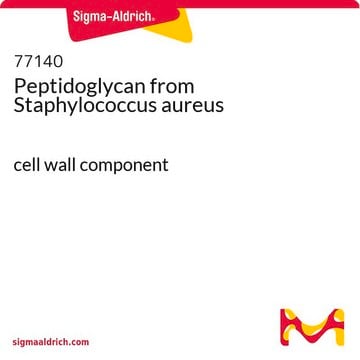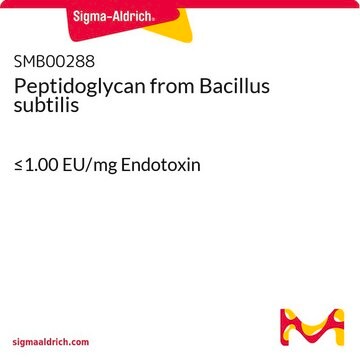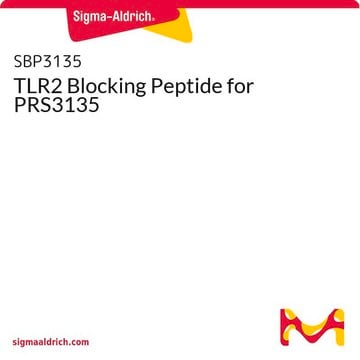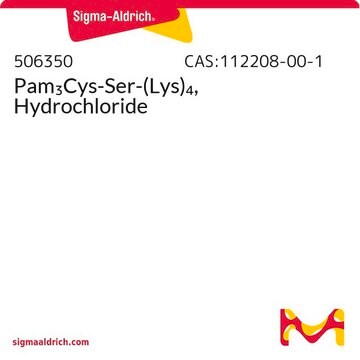69554
Peptidoglycan from Bacillus subtilis
Synonym(s):
PGN
About This Item
Recommended Products
Looking for similar products? Visit Product Comparison Guide
Related Categories
General description
Application
Peptidoglycan activates the Toll-like receptor 2 (TLR2), present in mammalian cells for the stimulation of lymphocytes. It may also function as an antagonist of Poly (I:C).
Packaging
Storage Class Code
11 - Combustible Solids
WGK
WGK 3
Flash Point(F)
Not applicable
Flash Point(C)
Not applicable
Personal Protective Equipment
Certificates of Analysis (COA)
Search for Certificates of Analysis (COA) by entering the products Lot/Batch Number. Lot and Batch Numbers can be found on a product’s label following the words ‘Lot’ or ‘Batch’.
Already Own This Product?
Find documentation for the products that you have recently purchased in the Document Library.
Customers Also Viewed
Articles
Peptidoglycan structure: alternating GlcNAc and N-acetylmuramic acid cross-linked to peptides form the basic backbone.
Peptidoglycan structure: alternating GlcNAc and N-acetylmuramic acid cross-linked to peptides form the basic backbone.
Peptidoglycan structure: alternating GlcNAc and N-acetylmuramic acid cross-linked to peptides form the basic backbone.
Peptidoglycan structure: alternating GlcNAc and N-acetylmuramic acid cross-linked to peptides form the basic backbone.
Our team of scientists has experience in all areas of research including Life Science, Material Science, Chemical Synthesis, Chromatography, Analytical and many others.
Contact Technical Service










